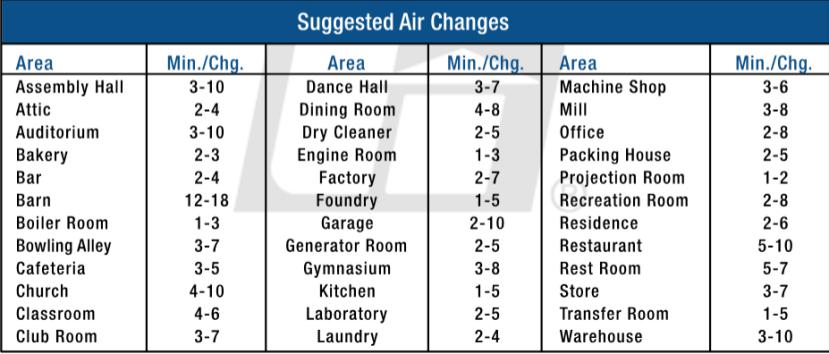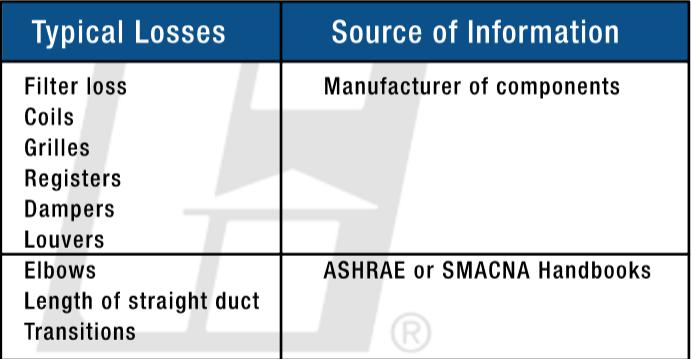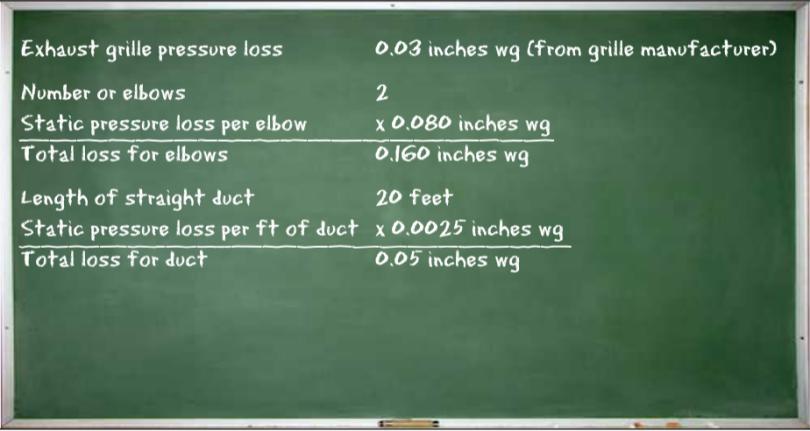To determine the required volume or CFM, first determine the room volume by multiplying the room’s length, times the width, times the height. For example, a room that is 15 feet long, by 30 feet wide, by ten feet high has a volume of 4,500 cubic feet.

Based on the room type, assembly hall, classroom or office for example, determine the number of minutes per air change for the room type. The sample table indicates that a classroom should have an air exchange rate of four to six minutes. Please note that this table is to be used as an example only. For correct, up-to-date outdoor air information, refer to ASHRAE Standard 62.1-2007 Ventilation for Acceptable Indoor Air Quality as well as ASHRAE Standard 90.1-2007, Energy Standard for Buildings Except Low-Rise Residential Buildings and any state or local codes that may apply.
Divide the room volume by the number of minutes per suggested air change. This equals the required CFM.

Next, determine the pressure. The fan’s static pressure should be sized to the sum of system losses from individual components such as ductwork, filters, grilles, registers, elbows and other system equipment, to find pressure loss values refer to the manufacturer, ASHRAE or SMACNA handbooks. Remember to include system effect losses caused by less than ideal installation conditions as well as positive or negative building pressure.

In this example, your system has an exhaust grill, two elbows, 20 feet of straight duct, and a backdraft damper. The carious pressure losses have been fathered,, calculated, and totaled to show total static pressure required for the fan, this example assumes system effect and building pressure are both zero.
Based on this example, you would need a fan that moves 900 cfm at 0.29 inches of static pressure. The next step is to determine the right fan type for the application.
In summary, to determine the required volume or CFM, you must: calculate the room volume, determine the number of air changes for the room type, divide the room volume by the number of air changes and determine pressure.